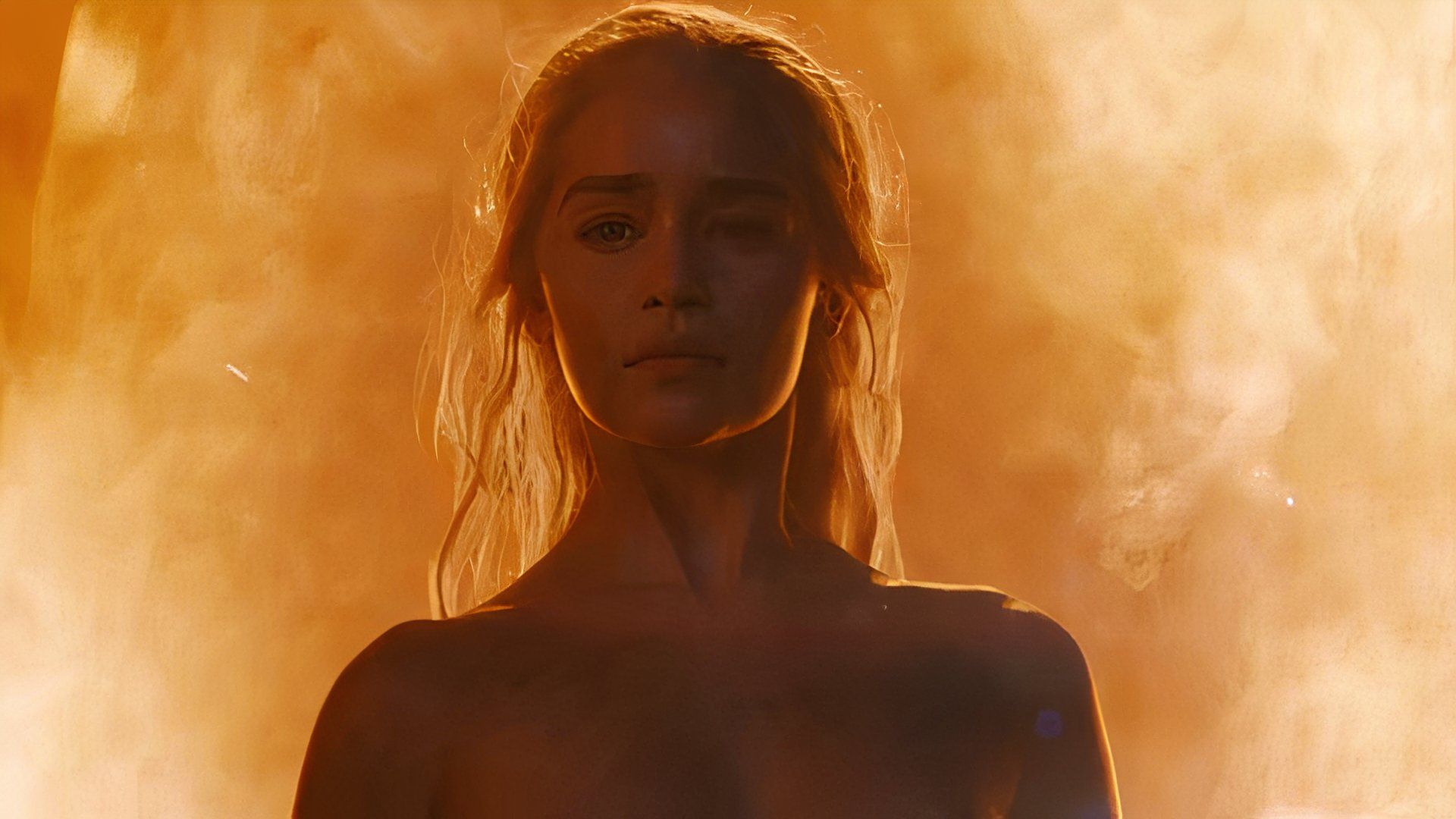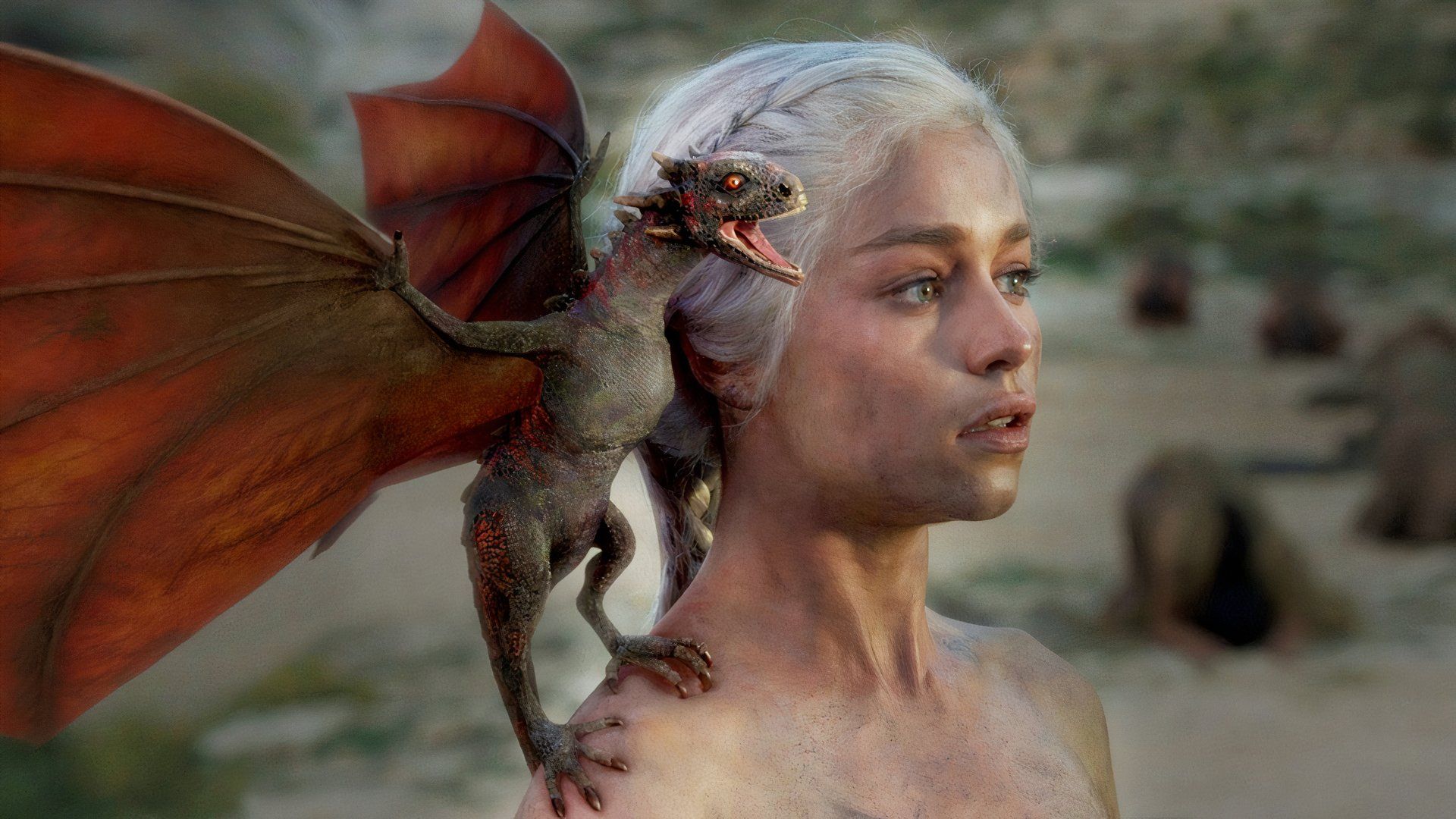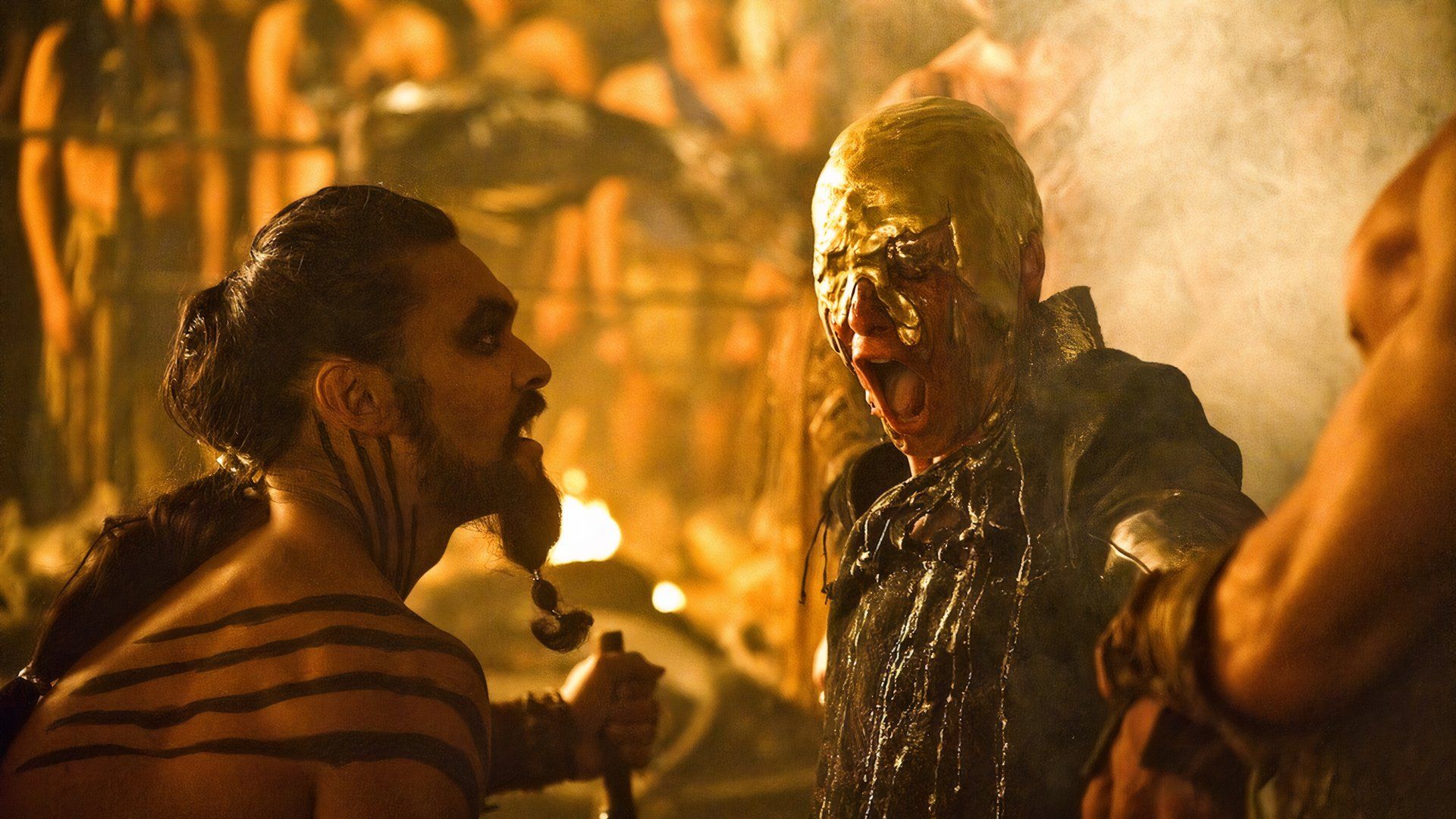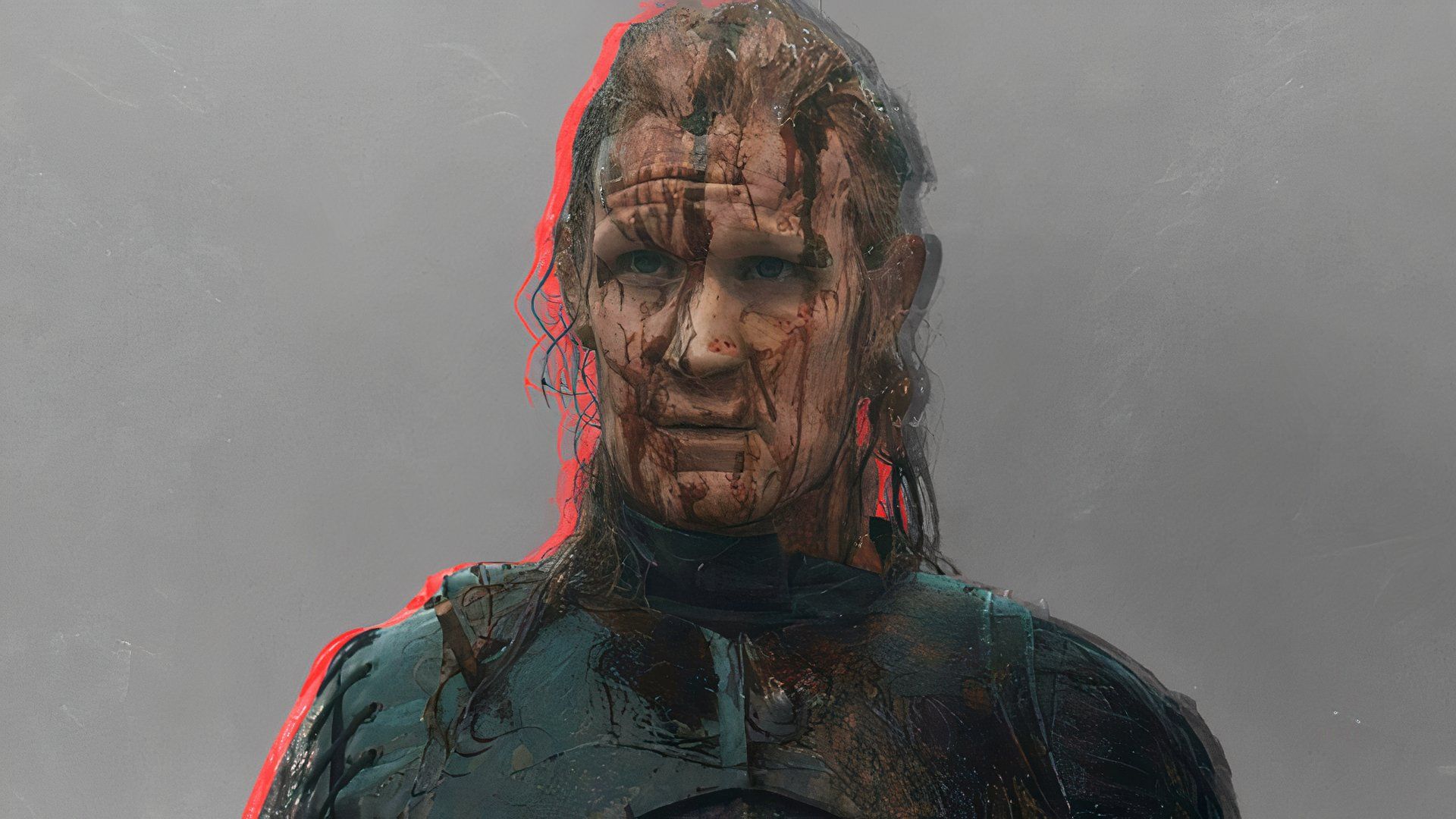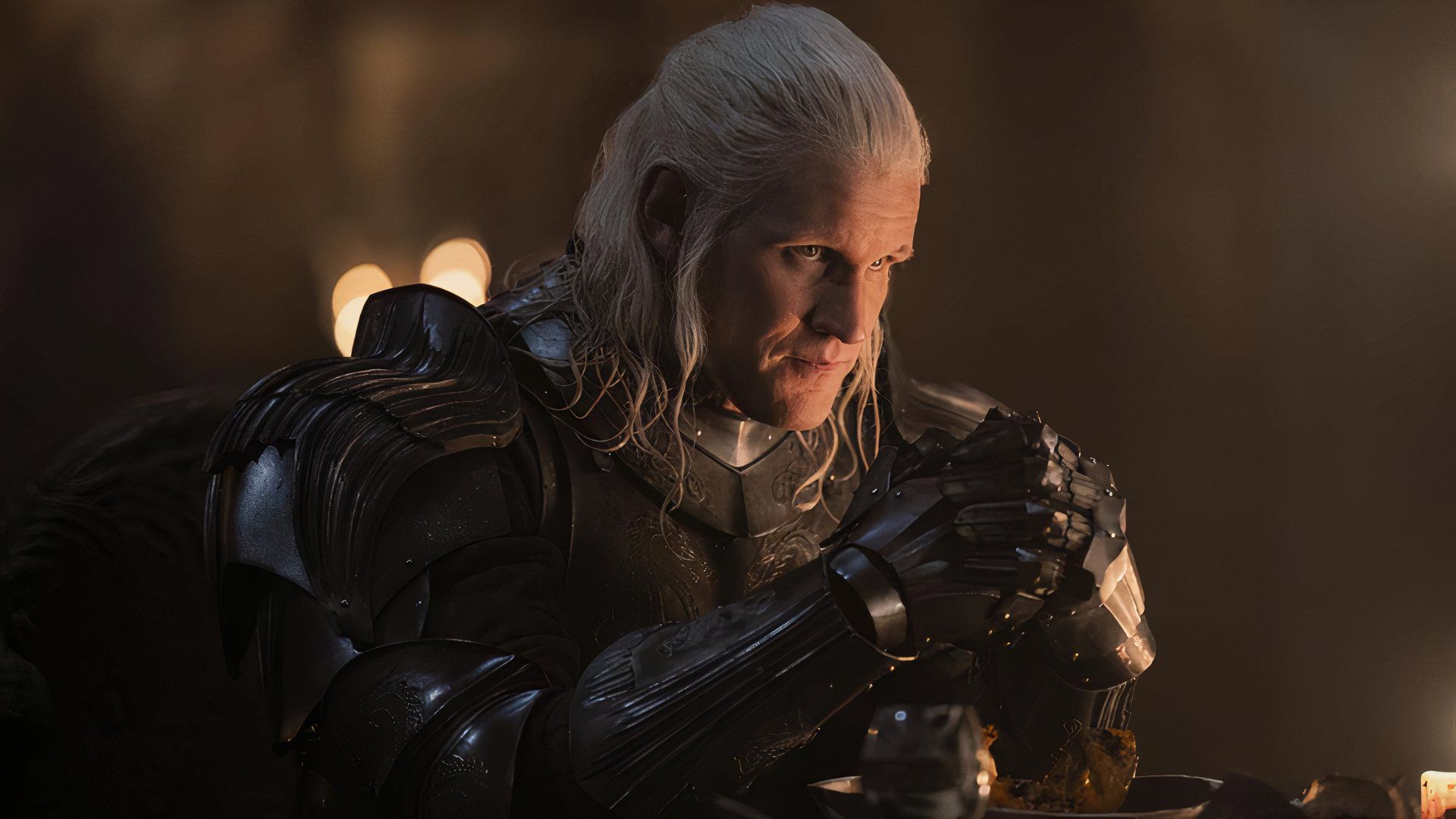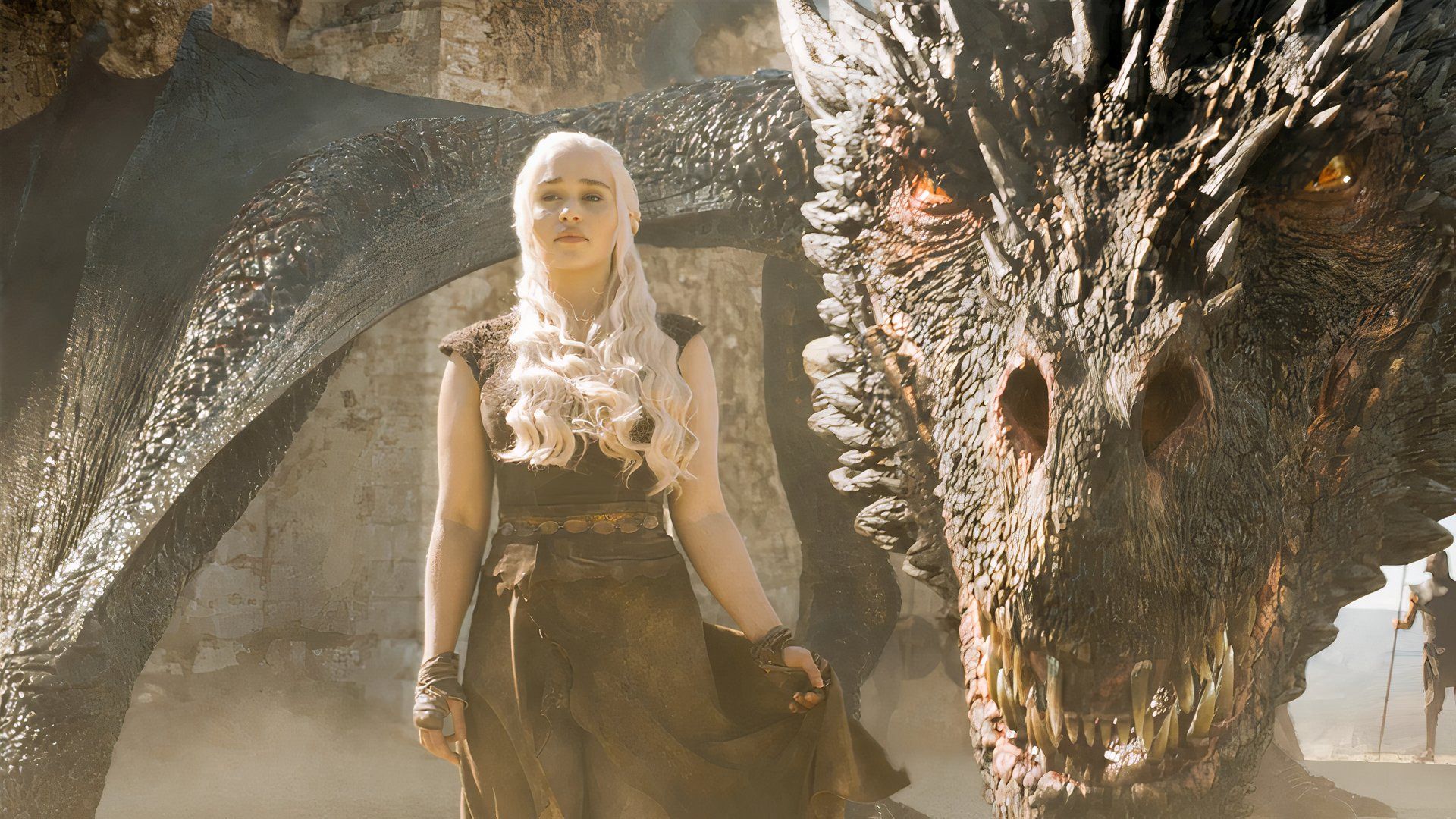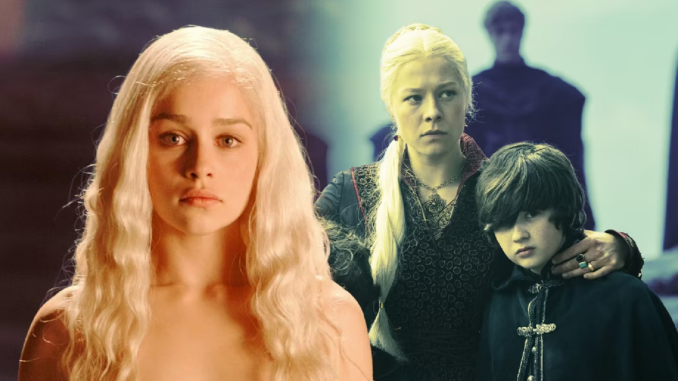
After a two-year hiatus, HBO’s successor to the wildly popular Game of Thrones, House of the Dragon, finally makes its glorious return on Sunday night. Set about 200 years before Game of Thrones, this series focuses on the Targaryen royal family and the events surrounding the legendary civil war, the Dance of the Dragons, which was naturally ignited over the coveted Iron Throne.
Unlike Game of Thrones, House of the Dragon features multiple silver-haired, dragon-riding Targaryens. But unlike in Game of Thrones, these Targaryens don’t seem to be immune to fire. Why is that? Let’s take a look at both Game of Thrones and House of the Dragon, as well as author George R.R. Martin’s extensive Westeros history, and see if we can solve the mystery.
Daenerys Targaryen, the Unburnt
Daenerys Targaryen (Emilia Clarke) is one of the main characters from Game of Thrones. One of the last surviving members of the Targaryen royal family, Daenerys is determined to win back her father’s throne and the Seven Kingdoms from which she was banished. She spends much of her young life fleeing from place to place with her abusive older brother Viserys (Harry Lloyd), trying to keep one step ahead of King Robert’s sellswords.
Early on, the show hints that Daenerys may be resistant to heat. She steps into a scalding bath but doesn’t flinch, and her palms aren’t burned when they hold a scorching dragon egg.
In one of the show’s most satisfying moments, molten gold is poured onto Viserys’ head and kills him. Daenerys watches the scene with indifference, calmly remarking, “He was not a true dragon. Fire cannot kill a dragon.” This quote single-handedly made fans believe that true Targaryens, true dragons, are immune to fire. In their eyes, Viserys was nothing more than an inferior Targaryen, a weakling whose royal blood didn’t possess the signature magical qualities of a true dragon.
Daenerys later backs up her statement by stepping into a massive, fiery pyre — and like a phoenix reborn, she emerges from the ashes unscathed with three baby dragons. This awe-inspiring event bestows Daenerys with the title “the Unburnt”, a name that she lives up to time and time again throughout Game of Thrones.
Other Targaryens Are NOT Fire-Proof
For most of Game of Thrones, we’re led to believe that Daenerys is the last surviving Targaryen. But a major plot twist (for those who weren’t expecting it) in the later seasons reveals the epic truth about Jon Snow’s (Kit Harrington) parentage: he’s not the bastard son of Ned Stark, but the trueborn son of Rhaegar Targaryen and the heir to the Iron Throne — a better claim than even Daenerys has.
Yet despite his Targaryen blood, Jon badly burns his hand when he grabs a fiery lantern and hurls it at a wight (the word for zombie in Westeros). Well, maybe he’s not immune to fire because of his Stark blood, we reason with ourselves. After all, he doesn’t have the platinum blonde hair of the Targaryens. It’s a decent argument, though it’s disproven later by House of the Dragon.
As mentioned earlier, House of the Dragon is littered with dragon-riding Targaryens. And from what we’ve seen, none of them share Daenerys’s immunity to fire. Laena Velaryon (Nanna Blondell), a member of the Targaryen family, is burned alive by her dragon — at her request — when she experiences childbirth complications. And Prince Daemon (Matt Smith), the badboy of the Targaryen royals, is burned and scarred by a flaming arrow during the War for the Stepstones.
Even Targaryen encyclopedias like Fire and Blood, written by author George R.R. Martin himself, bear little evidence to indicate that the Targaryens are fire-proof. Aerion Targaryen drank wildfire to prove that he was a dragon in human form and wound up burning himself to death. And King Aegon V was killed in a massive fire at Summerhall, known as the tragedy of Summerhall, along with his son Prince Duncan Targaryen. None of these examples exactly scream fire-proof.
Daenerys’ Miraculous Experience Differs in the Books
Martin’s history does show that Targaryens exhibit more heat-resistance than normal people, allowing them to withstand a dragon’s intense temperatures. But in terms of fire immunity, only Daenerys Targaryen possesses this incredible ability — and also only in the show. In Martin’s most recent book, A Dance with Dragons, Daenerys worries about Drogon burning her skin when he lands in the fighting pits, and she actually does receive minor burns from Drogon’s flames.
Literary Daenerys is not fire-proof. Her survival of the funeral pyre was a one-time event, a miracle rather than a superhuman ability. Back in 1999, long before Game of Thrones, Martin said this in an interview with Time magazine: “The birth of Dany’s dragons was unique, magical, wondrous, a miracle. She is called The Unburnt because she walked into the flames and lived.”
As it turns out, Game of Thrones took creative liberties with Daenerys’s character. The show gave her fire immunity, enhancing the perceived godliness of her character.
Martin’s books have yet to catch up to the show, so we don’t know what happens when Daenerys is taken by the Dothraki horde. Will she burn them all alive and survive that fire as well? Hopefully one day, Martin will finish the damn book, and we’ll get to find out. Until then, this whole “Targaryen-fire-immunity” thing is nothing more than a common misconception among fans, perpetuated by the creative liberties that were taken in Game of Thrones.
